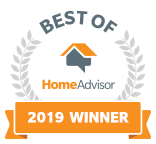Picture this: Our inspector arrives at a home to perform a mold inspection and found the homeowner doing his own demolition work on moldy drywall...wearing nothing to protect himself. Is that OK? Some of you may be thinking...no big deal, while others of you are gasping at the thought of no protection equipment in dealing with mold removal.
In dealing with mold removal, it’s not as simple as wiping down a little dirt. Despite it’s appearance, mold is not dirt...it is a living organism that lives and grows naturally in our environment and we live with small amounts of it every day. Mold procreates in above freezing and humid environments in such a way that it multiplies not only on a surface, but it also drives it’s roots into porous surfaces and releases microscopic spores and mycotoxins into the air. In your efforts to remove it, it will release even more spores into the air in it’s fight to stay alive. Spores and mycotoxins can easily be ingested and our bodies can be a perfect place for mold to thrive, thus possibly causing mold sickness or poisoning.
These variables need to be addressed, as well as the source of the moisture in order to ensure proper mold removal.
Can I remove mold myself?
Yes. But you need to follow these important protocols to ensure that you are effectively killing the mold and protecting your health:
- THE MOISTURE SOURCE -- Make sure you specifically address the source of the excess moisture (cracks in basement floor, inadequate attic ventilation) coming into your home and keep the humidity in your home to under 50%. A dehumidifier works well, but using the air conditioning in hot weather and heat in cold weather will also help manage the moisture in your home.
- PROTECT YOURSELF -- It is highly recommended to use respirator equipment, and either old clothes or a protective suit when cleaning mold and in the disposal of moldy surfaces to protect yourself from ingesting mold spores and mycotoxins for obvious reasons.
- EVALUATE THE TYPE OF SURFACE -- FOR NON-POROUS SURFACES -- On your non-porous surfaces, make sure you use a cleaner that will actually kill the mold. Many common household cleaners will not effectively accomplish this so do your homework on household cleaners. Bleach will often be most effective, but is also a toxic substance so it needs to be handled with care. See below for our recommendation on using bleach.
- FOR POROUS SURFACES -- You can only effectively remove mold via traditional cleaning methods on nonporous surfaces ONLY. Mold will grow it’s roots into absorbent or porous surfaces such as drywall, wood, and carpet. Common household cleaners will not penetrate enough into those surfaces to effectively kill the roots of the mold and is usually when a professional needs to be contacted. There are few mold cleaners that will effectively penetrate porous surfaces and actually kill mold, but be very careful of false advertising or purely bleaching agents. Our recommendation is www.justfogit.com which is a do it yourself kit that puts the power of a professional into your hands. More information below.
- THROW IT AWAY-- Dispose of any porous surface that has mold growing on it and is removable. That would include furniture, drywall, removable flooring, and carpet.
Can I use bleach?
Mold cannot be killed with just commercial soap and water, and bleach is commonly known to kill mold, but does it really? There are things you need to know about using chlorine bleach that we do not have time to go into here. One relevant note is that bleach needs to have at least a 6% hypochlorite content to be effective at killing mold. For further reference on bleach, review this article articulating the benefits and drawbacks to using chlorine bleach and using the more environmentally friendly alternative oxygen bleach at http://blacktoxicmolds.com/bleach-kill-mold.php.
And what about those mold spores and mycotoxins that are floating around airborne after I do my own mold removal?
This is a great question, and one that many people do not ask nor seem very concerned about...even professional companies don’t always address the decontaminated air in the entire home. But, there is cause for concern because after mold removal, airborne spores or mycotoxins can still affect your health and settle to create further mold problems. The air needs to be cleaned of the excess mold. But how does one clean the air? Here are some options:
- Renting or purchasing an air purifier with a HEPA filter can be a moderately effective solution for capturing mold in the home. Air circulation needs to be effective in order for the purifier to capture those bothersome air contaminants. NOTE: HEPA filters will not capture mycotoxins, however, because they are too small to be trapped by the HEPA .3 micron filter.
- Make sure to use effective high quality filters on your HVAC system.
- Just Fog It (www.justfogit.com) is a do-it-yourself decontamination product that uses the same product and fogger equipment that we at Enviro-Decon Services use as a professional remediation company. It is cheaper than employing a professional and will show you how to completely decontaminate the air in your home right down to destroying the mycotoxins and can be done as often as you like. You can then also use this product to do your own porous surface mold remediation, as well, since you are employing the same methods that we use professionally.
When should I call a professional?
You may realize now that you need to call a professional when the mold has grown into a porous surface that cannot be removed like wood, concrete, or flooring or if you have a persistent mold problem that will not permanently go away. Reputable professionals have effective and safe ways to remove the roots that have grown into the surface. Or check out www.justfogit.com.



